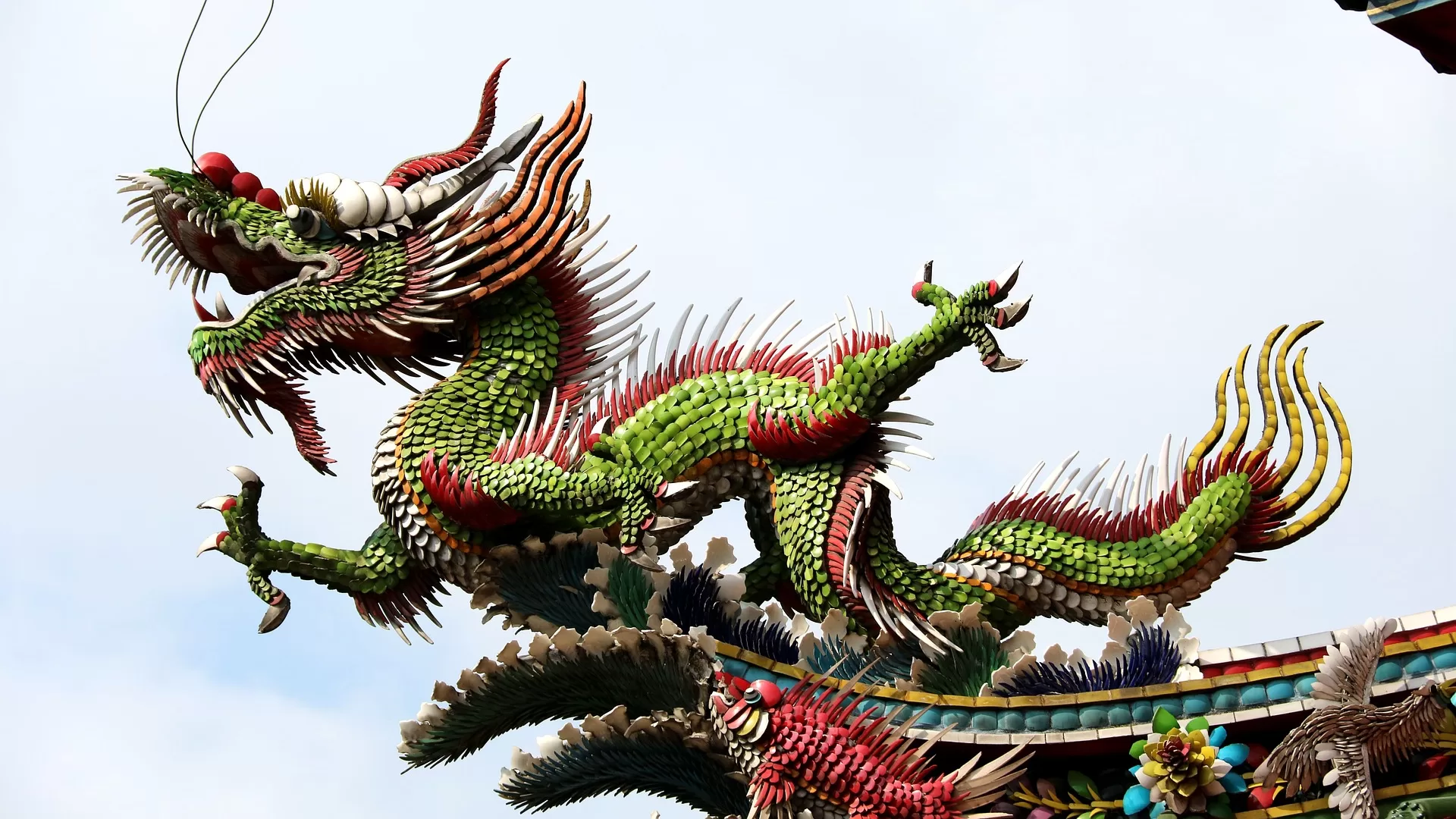During the eighteenth century, China and India held much of the world’s wealth. While India was under British influence, China was not. China was governed by an extraordinary emperor, the grandson of an equally exceptional grandfather. Emperor Qianlong (Ch’ien Lung) led the Celestial Empire for sixty years, from 1736 to 1796, belonging to the Manchu dynasty that succeeded the Ming, a Han Chinese dynasty. Qianlong’s grandfather, Kangxi (1654–1723), ruled for 61 years, demonstrating that lasting power is a guarantee of good governance and fruitful continuity. Under Kangxi’s reign, the economy stabilised, and the cultural level of the empire consistently increased. An encyclopaedia was composed for the use of the mandarins. In 1730, the Russians were allowed to establish a trading post in Beijing under the Treaty of Kyakhta.
Qianlong, who ascended the throne in 1736, took China to the pinnacle of its glory. A diligent, serious emperor, he regularly toured his provinces to gauge the state of his empire. He was adorned with military triumphs: in 1757, he decisively shattered Mongol power in Central Asia. Qianlong conquered Turkestan (today’s Xinjiang, populated by Uighurs) and subjugated Nepal in the Himalayas. Under his rule, China reached its maximum territorial extent, larger than today’s China. Its population significantly grew from 150 to 300 million, thanks to an agricultural revolution spearheaded by the wise Emperor, who introduced maize and potatoes to China. As is the case today, China under his rule experienced a rural exodus to well-administered cities, owing to the emperor’s prudent guidance. Culture continued to flourish, and the palace possessed an exceptionally well-stocked library.
When Qianlong abdicated in 1796 (he passed away in 1799), the gradual downfall of China commenced, primarily due to the inept schemes of his former favourite, Heshen. The poor governance that ensued after Qianlong’s death incited the first uprisings in the provinces. Successive administrations were weak but still imposed constraints on British and European trade: only two ports, Shanghai and Canton, were open to foreigners. The political decline led to the deterioration of morals: China was weakened by opium, which was soon imported en masse by the British in exchange for tangible riches like silk and silver. In 1839, a zealous and incorruptible official, Lin Zexu, decided to take action and had 20,000 cases of opium burned at the port of Shanghai. The British responded brutally by launching the First Opium War, which lasted three years. The British had naval supremacy and forced the Chinese to sign the Treaty of Nanjing in 1842, gaining control of Hong Kong. Furthermore, the Chinese were required to open five ports to British trade. This marked the beginning of a downward spiral: in 1844, the Americans demanded the same rights as the British, including extraterritoriality for their nationals; in 1845, the Franco-Chinese Treaty of Whampoa opened the Celestial Empire to French trade. For the Chinese, this was the commencement of the ‘century of humiliation’.
Chinese individuals who did not partake in decadence or corruption reacted as soon as the first indications of decline emerged during Heshen’s time by establishing secret societies with the aim of restoring order. These societies often had the drawback of being messianic and irrational. For instance, Hong Xiuquan, who converted to Christianity and gave it a highly personal interpretation, initiated a revolt on an unprecedented scale for the time. Claiming to be the resurrected brother of Christ, he led armed groups that besieged Nanjing in 1850. The city fell in 1853, and fifteen provinces of the empire followed this madman, setting southern China ablaze and plunging it into a vicious civil war. This revolt became known as the Taiping Rebellion. Hong Xiuquan’s distinct Christian messianism advocated for the equality of men and women and the abolition of private property. The most radical Maoism in the twentieth century was inspired by it, with some modifications. Faced with this bloody chaos, the weakened imperial power, possessing a professional but numerically small army, had to seek help from the European powers to obtain the resources necessary to counter the revolt. This modest support from the powers came at the cost of additional concessions, including opening up trade and legalising opium. Hong Xiuquan died in 1864, ending an internal war that left between twenty and thirty million dead, a number never before seen in history. In parallel to the Taiping rebellion in the South, the imperial power faced the socially driven, rather than messianic, Nian revolt in the North, which lasted from 1851 to 1868. The Second Opium War (1856–1860) occurred simultaneously with the two internal uprisings, with the imperial power pitted against France and England, whose expeditionary forces captured Canton and pillaged the Summer Palace. China was forced to accept the opening of eleven more ports.
China was considerably weakened by this triple disaster, particularly in comparison to Japan, which was on the verge of entering the Meiji era – a period of rapid and effective modernisation. Geopolitically, China lost its buffer zones, acquired by the competent emperors of the seventeenth and eighteenth centuries: Vietnam, which ceased to be its vassal, Manchuria, and Burma. This widespread collapse put China at a disadvantage with respect to Japan, which resolved to ‘ride the tiger of modernity’ brought by Western foreigners. In 1872, Japan introduced military service and modernised its army. In 1874, the rebellion of the traditionalist Samurai, who sought to maintain the status quo, was suppressed by the modern army. In 1876, Japan signed a treaty with Korea, intending to replace Chinese rule in the peninsula with Japanese rule. This led to the war of 1894-95 when a modernised Japan defeated the Chinese armies and imposed the Treaty of Shimonoseki: Korea came under Japanese rule, and Formosa (Taiwan) was annexed to the Empire of the Rising Sun. This was yet another humiliation for the Chinese. Only Dr Sun Yat-sen (1866–1925) drew the correct conclusions, founding the Society for the Renaissance of China in 1892, which aimed to modernise the empire as Japan had done. The inspiration for this society was the German economist Friedrich List, who influenced European and American policies of investment in communications (railways, canals, etc.). The Kuomintang (KMT), the Chinese nationalist party that evolved from the society founded by Sun Yat-sen, adopted List’s pragmatic ideas. Xi Jinping’s current policy of creating a vast network of ‘new silk roads’ is a manifestation of this. Behind the rhetoric and communist decorum, China is Confucian and Listian, even Schmittian. Socialist, religious, and xenophobic messianisms did not lead to success and, on the contrary, plunged China into even greater misery.
In 1898, the Hundred Days’ Reform was an attempt to modernise the Qing dynasty, but the conservative forces led by Empress Dowager Cixi quickly suppressed it. The failure of this reform attempt and ongoing humiliations led to the eruption of the Boxer Rebellion in 1900, a violent anti-foreigner and anti-Christian uprising. The intervention of an eight-nation alliance eventually crushed the rebellion, and China was subjected to even more degrading conditions and indemnities.
After the fall of the Qing dynasty in 1911, China entered a period of political fragmentation known as the Warlord Era. The KMT, under Sun Yat-sen’s leadership, attempted to establish a unified republican government. However, the country was plagued by infighting and regional warlords asserting their dominance. The KMT eventually allied with the Communist Party of China (CPC), which had been founded in 1921, to fight against the warlords. In 1928, after the Northern Expedition, the KMT established the Republic of China, led by Chiang Kai-shek, who had taken over after Sun Yat-sen’s death in 1925.
The alliance between the KMT and CPC soon disintegrated, leading to a civil war between the nationalists and communists. As the civil war raged, Japan took advantage of the situation and invaded China in 1937, initiating the Second Sino-Japanese War, which eventually became part of World War Two. In 1945, following Japan’s surrender, the Chinese civil war resumed, with the communists, led by Mao Zedong, eventually emerging as the victors in 1949. The defeated nationalists retreated to Taiwan, where they continued to claim legitimacy as the government of all of China.
Under Mao Zedong’s rule, China underwent several disastrous social and economic experiments, including the Great Leap Forward (1958–1962) and the Cultural Revolution (1966–1976), which resulted in millions of deaths and significant destruction of the country’s cultural heritage. After Mao’s death in 1976, China began a process of reform and opening up under the leadership of Deng Xiaoping. The country gradually embraced market-oriented policies and sought to integrate with the global economy, leading to rapid economic growth and lifting hundreds of millions of people out of poverty.
China’s rise as an economic and geopolitical power in the twenty-first century has been accompanied by a resurgence of nationalism and assertiveness on the world stage. Under President Xi Jinping, who came to power in 2012, China has pursued a more ambitious foreign policy and sought to expand its global influence through initiatives such as the Belt and Road Initiative. At the same time, China faces numerous challenges, including environmental degradation, an aging population, and increasing tensions with other countries, particularly the United States.
Throughout its tumultuous history, China has shown remarkable resilience and adaptability, overcoming numerous obstacles and hardships to emerge as a global superpower. The story of China’s rise offers essential lessons on the interplay between historical forces, cultural identity, and geopolitics.








I’m curious (and concerned) about what role China is going to play in the 21st century and what its impact will be on the USA, Russia, and Europe.
I agree with Bannon here. China does not have Europe’s interests at heart, and we should not trust them.
They may not be enemies, but they are competitors for power,
Watch a few episodes of Bannon’s War Room on Rumble. He breaks it down well.
Thank you to Robert Steuckers for this valuable article. While I generally like and admire Xi’s accomplishments and have studied Mao, the rest of this history wasn’t clear to me.
First-class scholarship!